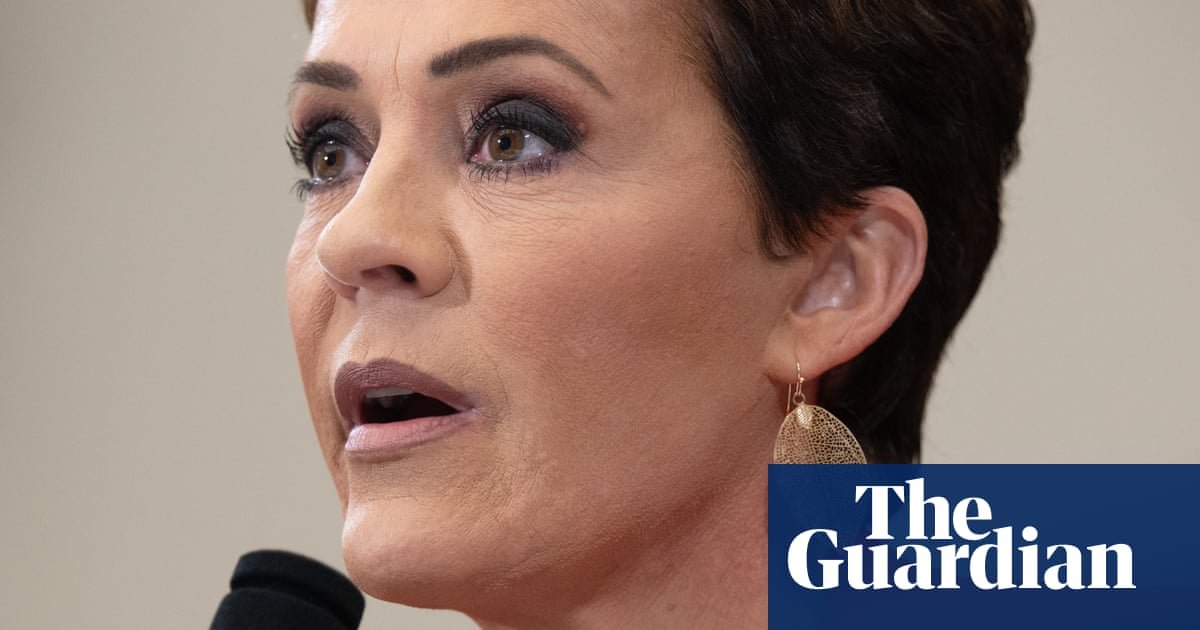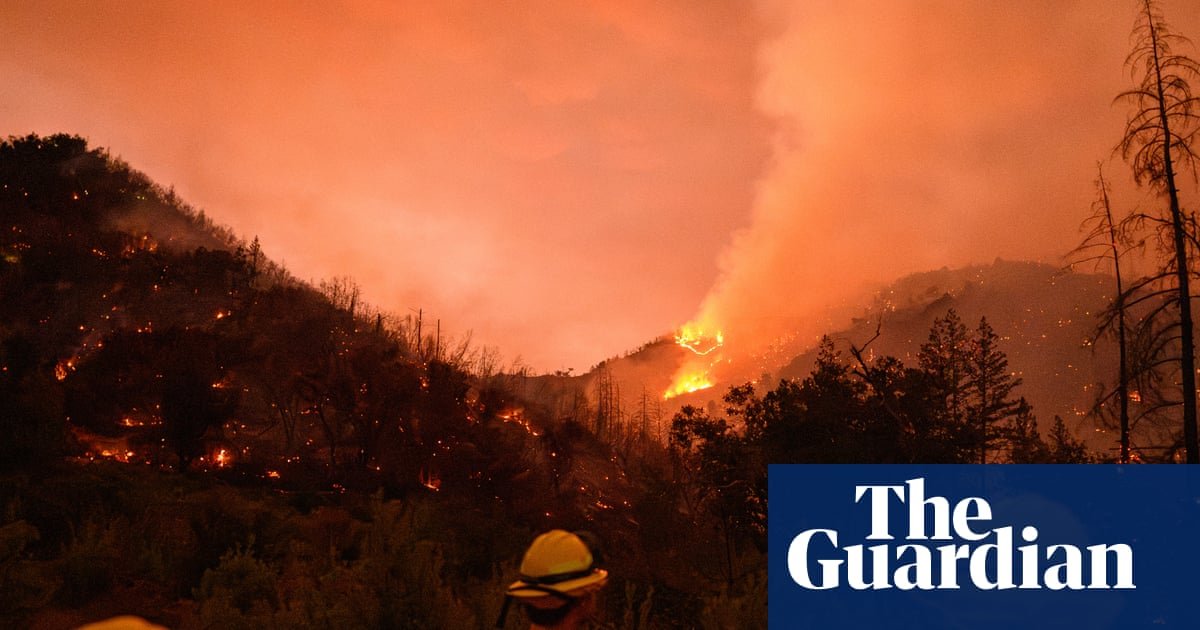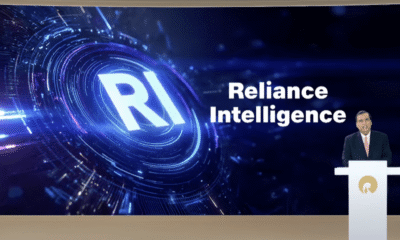Business
Experts discuss business operations and transformation

We speak to key experts from business, sales, technology, innovation and data about some of the emerging AI trends and why businesses need to ‘walk’ before they ‘run’.
Managing AI transformation and governance in asset-centric industries
AI presents significant opportunities for many organisations, but asset-centric industries in particular, where management and data collection plays a key role in the viability of assets, resources and infrastructure, are emerging as clear candidates for AI transformation.
However, according to Anthony Cipolla, AI Lead with data-led asset management solutions firm COSOL, organisations across the asset-centric industry landscape exhibit mixed maturity when it comes to their AI journeys, and are looking for guidance on getting AI integrations right.
During a recent industry event, Cipolla discussed the concept of approaching AI transformation from a Walk, Jog, Run Framework, where organisations are encouraged to gradually build their AI capabilities sensibly and safely.
Whether companies are exploring computer vision, language models, prediction or enhanced insights retrieval from structured and unstructured data, this framework sees AI practices first needing to become trustworthy and repeatable, then later able to deliver real value, before late-stage scaling up into production across the business.
“The scale of the change that AI presents to all industries is perhaps comparable to the disruption brought by the internet, mobile technology and cloud computing (though likely more exponential in nature),” Cipolla explained. “At the same time, the concept of the Agentic-Web is being developed to determine how AI systems are standardised and communicate with each other.
“AI Governance has also become a priority for organisations, though the good news is that it builds on the existing Data Governance work many companies have already undertaken.
“Business transformation takes time, communication and understanding across organisations and industries. For asset-centric industries looking to walk then jog then run with AI, this means effective change management must also be one of the most important areas of focus.”
This pace of transformation is evident across related sectors, and this is highlighted by just how quickly AI is changing the software engineering space.
“During a conversation at Meta’s LlamaCon event in April 2025, CEO Mark Zuckerberg said that within a year, approximately half of Meta’s software development could be handled by AI, with expectations for this proportion to grow over time,” Cipolla explains.
Integrating AI capabilities directly into existing business systems
Looking to harness the benefits of AI to provide its customers with more features, one company has taken steps to build AI features conveniently into its product, providing users with hassle-free access to frontier technology.
Leading enterprise resource planning and analytics software provider, Pronto Software, just signed a strategic agreement with IBM Australia, enabling the integration of powerful Agentic AI capabilities into its Pronto Xi ERP platform via IBM Watsonx.
Pronto Software Managing Director Chad Gates says the initiative is designed to democratise access to intelligence, helping businesses develop the capabilities of their teams.
“Rather than replacing workers, we’re using AI to elevate them,” Gates says. “Our customers, many of them family-run, mid-sized businesses, can enable staff to act strategically. Pronto Software can work with customers to build and deploy Agentic AI that not only informs, but acts on the information, unlocking real business value without compromising security.
“With Watson’s Agentic AI integrated into Pronto Xi, workers can ask a question in plain English and instantly receive forward-looking insights that support smarter decisions.”
This approach shows how businesses can adopt AI without disrupting existing workflows. Rather than requiring staff to learn entirely new platforms, the technology becomes part of the tools they already use daily, reducing the typical barriers to AI adoption.
“AI doesn’t have to be overwhelming or intimidating,” Gates adds. “It should feel like a natural part of your workflow, and that’s exactly what we are delivering. With this new capability, Pronto Xi becomes not just a system of record, but a system of insight and empowerment.”
The future belongs to those who blend human design thinking and AI power
AI will never ‘replace’ authentic human connection – but it can drive efficiency and amplify the impact of our business interactions and operations. AI’s core power lies in its ability to automate the grunt work – those repetitive, manual tasks that slow down productivity. From automating lead generation to scaling personalised customer outreach and enabling more strategic conversations, AI-powered tools are proving to be an asset rather than a threat.
According to Rory Clark, founder of NeuralNet Chat, now is the time to pay attention to the demand in AI automation while we still are in AI’s infancy. Clark likens today’s AI moment to the early 2000s tech boom, when companies like Amazon and Facebook were just starting to take off.
“We’re at that dot-com moment again,” Clark says. “There are so many AI opportunities emerging daily, and businesses that act now will gain a huge competitive edge.”
But that doesn’t mean chasing every trend. Clark warns against ‘AI washing’, and getting distracted by tools being labelled as ‘AI-powered,’ when there’s barely any real AI behind them.
“The future belongs to businesses that combine smart automation with authentic engagement, marketing savvy, and a strong understanding of their customer journey,” Clark concludes. “The companies that adopt AI now won’t look back. They’ll be glad they jumped in early.”
Business
More than 500 workers at Voice of America and other broadcasters to be laid off | Trump administration

The agency that oversees Voice of America and other government-funded international broadcasters is eliminating jobs for more than 500 employees, a Trump administration official said. The move could ratchet up a months-long legal challenge over the news outlets’ fate.
Kari Lake, acting CEO of the US Agency for Global Media, announced the latest round of job cuts late Friday, one day after a federal judge blocked her from removing Michael Abramowitz as VOA director.
US district judge Royce Lamberth had ruled separately that the Republican administration had failed to show how it was complying with his orders to restore VOA’s operations. His order Monday gave the administration “one final opportunity, short of a contempt trial” to demonstrate its compliance. He ordered Lake to sit for a deposition by lawyers for agency employees by 15 September.
On Thursday, Lamberth said Abramowitz could not be removed without the approval of the majority of the International Broadcasting Advisory Board. Firing Abramowitz would be “plainly contrary to law”, according to Lamberth, who was nominated to the bench by Ronald Reagan.
Lake posted a statement on social media that said her agency had initiated a reduction in force, or RIF, eliminating 532 jobs for full-time government employees. She said the agency “will continue to fulfill its statutory mission after this RIF– and will likely improve its ability to function”.
“I look forward to taking additional steps in the coming months to improve the functioning of a very broken agency and make sure America’s voice is heard abroad where it matters most,” she wrote.
A group of agency employees who sued to block VOA’s elimination said Lake’s move would give their colleagues 30 days until their pay and benefits end.
“We find Lake’s continued attacks on our agency abhorrent,” they said in a statement. “We are looking forward to her deposition to hear whether her plan to dismantle VOA was done with the rigorous review process that Congress requires. So far we have not seen any evidence of that.”
They added: “We will continue to fight for what we believe to be our rights under the law.”
In June, layoff notices were sent to more than 600 agency employees. Abramowitz was placed on administrative leave along with almost the entire VOA staff. He was told he would be fired effective 31 August.
The administration said in a court filing Thursday that it planned to send RIF notices to 486 employees of VOA and 46 other agency employees but intended to retain 158 agency employees and 108 VOA employees. The filing said the global media agency had 137 “active employees” and 62 other employees on administrative leave while VOA had 86 active employees and 512 others on administrative leave.
The agency also houses Radio Free Europe/Radio Liberty, Radio Free Asia, Middle East Broadcasting Networks and Radio Martí, which beams Spanish-language news into Cuba. The networks, which together reach an estimated 427 million people, date to the cold war and are part of a network of government-funded organizations trying to extend US influence and combat authoritarianism.
In March, Abramowitz warned that Trump’s attempts to dismantle the VOA would be a “self-inflicted blow” to American national security, saying: “If America pulls off the playing field and cedes it to our adversaries, then they’re going to be telling the narratives that people around the world are going to be hearing, and that can’t be good for America … They’re going to be hearing an anti-America narrative. We need to fight that with truth.”
after newsletter promotion
He added: “The major challenge for the United States in general is this global information war in which countries like China and Russia are essentially really having our lunch. … So, I really feel that we need an organization that is accurate, unbiased, objective, and that tells the truth about America to the rest of the world in the languages that they understand.”
This week, Trump also moved to remove union protections from a handful of federal employees, including those from the VOA.
In response, the American Federation of State, County and Municipal Employees, the nation’s largest trade union of public employees, said: “AFSCME members who fulfill the Congressionally mandated mission to broadcast Voice of America around the globe shine the beacon of freedom on the most oppressive of regimes. Now, because they have been fighting to keep Voice of America’s mission alive, their own voice on the job has been stripped from them. AFSCME will fight this illegal action in court.”
Earlier this year, foreign staff at US-backed media outlets voiced concerns over their safety following Trump’s shuttering of the global media agencies.
Speaking to the Guardian in March, Jaewoo Park, a journalist for Radio Free Asia, said: “We have many co-workers in different services, several of whom came here and sought asylum visas. If their own government knew they worked for RFA [Radio Free Asia] and they went back to their own country, their lives would be at risk.”
“Authoritarian governments have praised what Trump is doing right now … In Burma, Vietnam, Laos, Cambodia, there were people who fought for freedom and democracy, and they came to work at RFA. It’s very risky for them. Their lives are in danger if Radio Free Asia doesn’t exist,” he added.
Business
Vineyards assess damage as wildfire rips through California wine country: ‘A devastating situation’ | California wildfires

Elton Slone and his colleagues at the Robert Craig Winery in Napa Valley had gathered for their annual pre-harvest company party last week – complete with copper pot carnitas and grape tacos – when one of his co-workers noticed an alert on her phone. The Pickett fire, a blaze that had started about 10 miles away near the town of Calistoga, was moving toward their vineyards on Howell Mountain.
Knowing that the Glass fire – a 2020 blaze that damaged numerous wineries and spoiled a year’s harvest – had burned along the same path, Slone hoped no fuel remained for this new fire. “But that was not the case,” he said. Within the week, the winery’s Candlestick Vineyard would become “a sacrificial lamb for the town of Angwin” when firefighters lit a controlled burn on their property to control the larger fire.
Vineyards can make excellent fire breaks because they are typically clear of burnable plant matter, and grape vines themselves are moist enough to be nonflammable. But heat damage and smoke can still destroy a crop.
The Robert Craig Winery lost the entire crop of their Candlestick Vineyard, which would have generated $4.5m in revenue. And Slone estimates about 10% of the vines will need to be replanted – a process that will cost hundreds of thousands of dollars and take a decade to see new bottles of wine ready for market. The team will test grapes on another one of their vineyards closer to harvest to see whether the smoke affected them.
The loss comes at the end of the growing season – after Slone’s vineyard had sunk nearly $1m into farming costs – and is made even more devastating because it’s happened before. The memories of the 2020 Glass fire and 2018 Camp fire, which burned farther east but still sent smoke to blanket Napa’s grapevines, are still fresh. “It’s financially a devastating situation,” said Slone.
The still-burning Pickett fire, which began on 21 August in northern Napa county, quickly burned through 6,800 acres (2,750 hectares), making it the San Francisco Bay Area’s largest wildfire this year. Preliminary estimates show that it caused $65m in agricultural losses, largely to wine grape growers, affecting about 1,500 acres (610 hectares) of agricultural land.
Although that damage is significantly less than that wrought by the Glass fire – which burned through 67,000 acres (27,000 hectares) and racked up $3.7bn in losses – the growing threat of wildfires in arid California has still shaken the wine industry.
“Northern California wine country is one of the treasures of the United States,” said Slone. “It’s something that I think all Americans should be concerned about because it’s a uniquely American thing.”
‘Tastes like a campfire’
Along the west coast, wine grape growers have implemented many strategies to prepare for wildfires – with the support of scientists at the US Department of Agriculture and local universities.
Ben Montpetit, chair of the University of California, Davis’s viticulture and enology department, said in an emailed statement that the industry has employed “barrier sprays to reduce smoke uptake, annual testing to establish baseline smoke marker levels in grapes, and small-lot fermentations after smoke events to assess potential wine impact”.
“Researchers are also investigating which grape cultivars are more sensitive or tolerant to smoke exposure,” he added.
“We’ve made a lot of progress in the preparedness realm,” said Natalie Collins, president of the California Association of Winegrape Growers, who noted the industry established a smoke exposure taskforce after the losses in 2018 to aid growers after wildfires.
The existence of that taskforce hints at a perennial problem for vineyards: though they can often keep wildfire off their acres, there’s little that can keep smoke at bay. And if smoke sits in an area for too long, it can leave grapes tasting ashy, like a campfire.
“Smoke taint issues are kind of fickle,” said Heather Griffin, a partner at Summit Lake Vineyards and Winery. “It depends on the varietal, depends on your ripeness level and depends on how long the exposure was.”
Griffin’s family’s vineyards were saved from the Pickett fire – “They stopped the fire at the end of our ridge up on Howell Mountain,” she said – but they’ll need to send grapes out for testing before harvest to be sure the smoke didn’t taint it.
Protecting the industry
For the first year ever, crop insurers are offering a new coverage option called the fire insurance protection smoke index endorsement, which would insure vineyards for losses due to smoke exposure.
But some growers say the cost of crop insurance has become unattainable after repeated wildfires.
“Our insurance went up so much after the fires of 2020. It literally went from $40,000 a year for really great coverage for all of our properties and inventory, and now it’s $300,000 a year and covers nothing,” said Slone.
For the 95% of Napa valley’s wineries that are family-owned, that cost can be “catastrophic”, he adds.
The wine industry has historically relied on federal funding to support USDA and university research into wildfire preparedness. Although those levels have remained steady despite widespread federal cuts, eight federal wine grape research scientists – including a smoke exposure specialist – were fired and then rehired early in the Trump administration’s Doge-era cuts.
“We want to make sure that an industry like ours continues to be protected,” said Collins, as “we continue to see the writing on the wall in California that wildfires likely will continue to be an issue here.”
It’s possible that some federal disaster relief funding may work its way to affected vineyards, but Griffin says buying wine from those wineries “helps everybody that’s up here”.
“Shoot them an email and buy some of their wine,” added Slone. “They will be the most appreciative people on the planet earth.”
Business
Here’s what to know about the court ruling striking down Trump’s tariffs | Trump tariffs

Donald Trump suffered the biggest defeat yet to his tariff policies on Friday, as a federal appeals court ruled he had overstepped his presidential powers when he enacted punitive financial measures against almost every country in the world.
In a 7-4 ruling, the Washington DC court said that while US law “bestows significant authority on the president to undertake a number of actions in response to a declared national emergency”, none of those actions allow for the imposition of tariffs or taxes.
It means the ultimate ruling on the legality of Trump’s tariffs, which were famously based on spurious economic science and rocked the global economy when he announced them in April, will probably be made by the US supreme court.
Here’s what to know.
Which tariffs did the court knock down?
The decision centers on the tariffs Trump introduced on 2 April, on what he called “liberation day”. The tariffs set a 10% baseline on virtually all of the US’s trading partners and so-called “reciprocal” tariffs on countries he argued have unfairly treated the US. Lesotho, a country of 2.3 million people in southern Africa, was hit with a 50% tariff, while Trump also announced a tariff of 10% on a group of uninhabited islands populated by penguins.
The ruling voided all those tariffs, with the judges finding the president’s measures “unbounded in scope, amount and duration”. They said the tariffs “assert an expansive authority that is beyond the express limitations” of the law his administration used to pass them.
Tariffs typically need to be approved by Congress, but Trump claimed he has the right to impose tariffs on trading partners under the International Emergency Economic Powers Act (IEEPA), which in some circumstances grants the president authority to regulate or prohibit international transactions during a national emergency.
The court ruled: “It seems unlikely that Congress intended, in enacting IEEPA, to depart from its past practice and grant the president unlimited authority to impose tariffs.”
Trump invoked the same law in February to impose tariffs on Canada, Mexico and China, claiming that the flow of undocumented immigrants and drugs across the US border amounted to a national emergency, and that the three countries needed to do more to stop it.
Are the tariffs gone now?
No. The court largely upheld a May decision by a federal trade court in New York that ruled Trump’s tariffs were illegal. But Friday’s ruling tossed out a part of that ruling that would have struck down the tariffs immediately.
The court said the ruling would not take effect until 14 October. That allows the Trump administration time to appeal to the majority-conservative US supreme court, which will have the ultimate say on whether Trump has the legal right, as president, to upend US trade policy.
What does this mean for Trump’s trade agenda?
The government has argued that if Trump’s tariffs are struck down, it might have to refund some of the import taxes that it has collected, which would deliver a financial blow to the US treasury.
Revenue from tariffs totaled $159bn by July, more than double what it was at the same point last year. The justice department warned in a legal filing this month that revoking the tariffs could mean “financial ruin” for the United States.
The ruling could also put Trump on shaky ground in trying to impose tariffs going forward. The president does have alternative laws for imposing import tariffs, but they would limit the speed and severity with which he could act.
In its decision in May, the trade court said that Trump has more limited power to impose tariffs to address trade deficits under another statute, the Trade Act of 1974. But that law restricts tariffs to 15% and to just 150 days on countries with which the United States runs big trade deficits.
How has Trump responded
He’s not happy. Trump spent Friday evening reposting dozens of social media posts that were critical of the court’s decision. In a post on his own social media site, Trump claimed, as he tends to do when judges rule against him, that the decision was made by a “highly partisan appeals court”.
“If these Tariffs ever went away, it would be a total disaster for the Country,” Trump wrote. He added: “If allowed to stand, this Decision would literally destroy the United States of America.”
Trump claimed “tariffs are the best tool to help our workers”, despite their costs being typically borne by everyday Americans. The tariffs have triggered economic and political uncertainty across the world and stoked fears of rising inflation.
-
Tools & Platforms3 weeks ago
Building Trust in Military AI Starts with Opening the Black Box – War on the Rocks
-

 Ethics & Policy1 month ago
Ethics & Policy1 month agoSDAIA Supports Saudi Arabia’s Leadership in Shaping Global AI Ethics, Policy, and Research – وكالة الأنباء السعودية
-

 Events & Conferences3 months ago
Events & Conferences3 months agoJourney to 1000 models: Scaling Instagram’s recommendation system
-

 Jobs & Careers2 months ago
Jobs & Careers2 months agoMumbai-based Perplexity Alternative Has 60k+ Users Without Funding
-

 Funding & Business2 months ago
Funding & Business2 months agoKayak and Expedia race to build AI travel agents that turn social posts into itineraries
-

 Education2 months ago
Education2 months agoVEX Robotics launches AI-powered classroom robotics system
-

 Business1 day ago
Business1 day agoThe Guardian view on Trump and the Fed: independence is no substitute for accountability | Editorial
-

 Podcasts & Talks2 months ago
Podcasts & Talks2 months agoHappy 4th of July! 🎆 Made with Veo 3 in Gemini
-

 Podcasts & Talks2 months ago
Podcasts & Talks2 months agoOpenAI 🤝 @teamganassi
-

 Jobs & Careers2 months ago
Jobs & Careers2 months agoAstrophel Aerospace Raises ₹6.84 Crore to Build Reusable Launch Vehicle





















